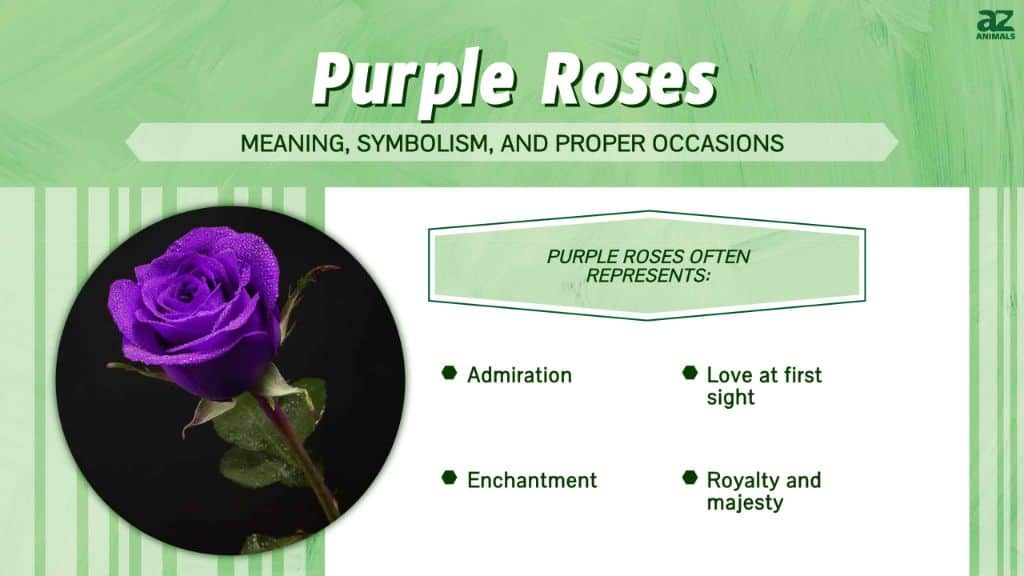Purple flowers have long held symbolic meaning across cultures. In fact, the color purple itself carries deep symbolic weight going back thousands of years. Purple dye was historically extracted from certain mollusks and was very rare, valuable, and reserved for royalty. Today, purple flowers signify a wide range of meanings from royalty and spirituality to creativity and imagination. The specific meaning of a purple flower depends on the culture, context, and type of flower itself.
Royalty
Throughout history, purple has been strongly associated with royalty, nobility, luxury, and ambition. This is because purple dye was extremely rare, valuable, and difficult to produce in ancient times. As a result, purple garments could only be worn by the very wealthy. The color purple became a status symbol among kings, queens, emperors, and nobles who wore purple robes and used purple banners.
Many purple flowers today invoke a sense of majesty, originality, and mysticism. Flowers like purple irises, orchids, alliums, pansies, lavender, and hyacinths evoke the exotic, unique beauty of royal purple. Giving purple blooms can signify that the recipient is special and royal. Purple flowers are a creative, magical gift for anyone who wants to make a powerful statement.
Spirituality
Purple also represents spiritual awareness in many cultures and religions. It invokes sacredness, imagination, and openness to exploring the mystical unknown. Many wisdom traditions including Buddhism, Hinduism, and New Age spiritual practices use the color purple to stimulate higher wisdom and psychic abilities.
Purple flowers like lavender, violets, lilacs, and hyacinths are said to energize the third eye chakra and crown chakra. These chakras relate to intuition, imagination, and connecting to something greater than oneself. Purple blooms are common gifts for grieving, healing, prayer, and spiritual rituals. They create an environment of sacredness, calmness, and openness to examining life’s deepest mysteries.
Creativity
The color purple stimulates creative expression, unconventionality, and magical thinking. Purple is a combination of calm stability (from blue) and fierce passion (from red). It represents a bridge between the physical and spiritual realms.
Purple flowers encourage creative thinking, intuitive pursuits, and innovation. Blooms like orchids, lavender, chrysanthemums, and lilacs inspire free-flowing creativity and imagination. Purple evokes a sense of fantasy, individuality, and artistic experimentation. It’s a color associated with visionaries, eccentrics, and innovators throughout history.
Imagination
Closely related to creativity, purple also represents a gateway to imagination and dreams. It’s a color that stimulates the imagination and inspires childlike joy. Visualizing or meditating on the color purple can unlock normally inaccessible realms of dreams, inventions, and magical ideas.
Purple blooms like hyacinths, lavender, crocuses, and pansies evoke a sense of make-believe, daydreaming, and imaginative wanderlust. Purple inspires mystical musing, fantasy, and spontaneously exploring the landscape of the mind. It allows one to transcend mundane reality through flights of fancy.
Wisdom and Depth
While purple evokes imagination, it also represents wisdom, experience, and depth. Dark or deep purple is associated with knowledge, vision, integrity, and mystic insight across cultures. Purple is complex color that embodies the contradictory properties of red passion and blue calm.
Flowers like purple roses, irises, violets, and hyacinths suggest depth of emotion, thought, and character. Purple blooms make a thoughtful gift for wise, soulful people who have weathered life’s storms. They signify seeing beneath surface appearances and appreciating hidden dimensions of truth. Purple roses in particular mean achieving new wisdom through love and loss.
Eccentricity and Mystery
Purple is also associated with the unconventional and anomalous. Eccentric people throughout history including artists, occultists, and visionaries have been drawn to the color purple. Its contradictory nature signifies the mysterious, idiosyncratic, and unexpected.
Flowers like purple orchids, calla lilies, pansies, and foxglove have an aura of eccentricity and mystery. Their unusual colors and shapes evoke a sense of individuality and complexity. Purple blooms suggest embracing one’s quirks, oddities, and singular passions without fear of judgement. Purple walks the fine line between the earthly and otherworldly.
Conclusion
In short, purple flowers represent royalty, spirituality, creativity, imagination, wisdom, and mystery. They are richly symbolic flowers that have captured humanity’s imagination for millennia. From ancient myth to modern movies, purple’s rarity has given it an air of mysticism and magic. Purple blooms make thoughtful, exotic gifts for almost any occasion. Their lush hues and fragrant aromas create an ambience conducive to unlocking inner truths. Whatever specific meaning it holds, purple remains among the most beloved flower colors cross-culturally.


